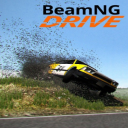Snapchat's Breakthrough in Accelerating Generative AI Image Creation
21 Jun 2023

Snapchat is on the verge of transforming the world of generative artificial intelligence (AI) with its latest announcement. The social media giant claims to have significantly accelerated the speed at which AI can create images in response to text queries, making this a groundbreaking development in the field of generative AI processes. With quicker image generation, users can expect a better experience, enhanced privacy, and reduced processing costs for developers.
Current generative AI tools typically take around 30 seconds to generate images, even on mobile devices, but Snapchat's new system, dubbed "SnapFusion," promises to reduce this time to a mere two seconds. This remarkable achievement is attributed to the optimization of the network architecture and the denoising process, ensuring that the image quality is maintained while delivering results at lightning-fast speeds. As a result, images based on text prompts can now be generated almost instantly, rather than taking minutes or hours like traditional research methods.
Examples of visuals produced by the SnapFusion process demonstrate its impressive capabilities. These images still resemble the familiar generative AI pictures we've come to expect, but their rapid generation time sets them apart. This speedy image creation offers a wide range of potential benefits, the most immediate being a more enjoyable user experience. By reducing the time spent waiting for images to be generated, users can swiftly move through the creative process without being hindered by delays.
Furthermore, SnapFusion's rapid image generation capabilities have important implications for privacy. As images can be created more quickly, there is less need to share user data with third parties, thus protecting users' personal information. Additionally, the new system could help cut down on processing costs for developers, making it a more attractive option for those looking to implement generative AI technology in their work.
However, one caveat worth mentioning is that the majority of Snapchat's experiments were conducted on an iPhone Pro 14, a device with significantly more computing power than many other smartphones. As a result, the reported speed benchmarks may not be attainable on lower-powered devices. Regardless, SnapFusion still promises faster image generation than existing systems, making it a promising and exciting addition to the realm of generative AI. As the technology continues to develop, it will be fascinating to see how this breakthrough influences the future of AI-generated images and the creative process as a whole.







